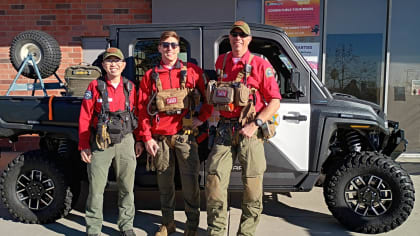BIGGER IS BETTER
This article is from our archives and has not been updated and integrated with our "new" site yet... Even so, it's still awesome - so keep reading!
Published on Mon, Sep 6, 2004
By: The LACar Editorial Staff
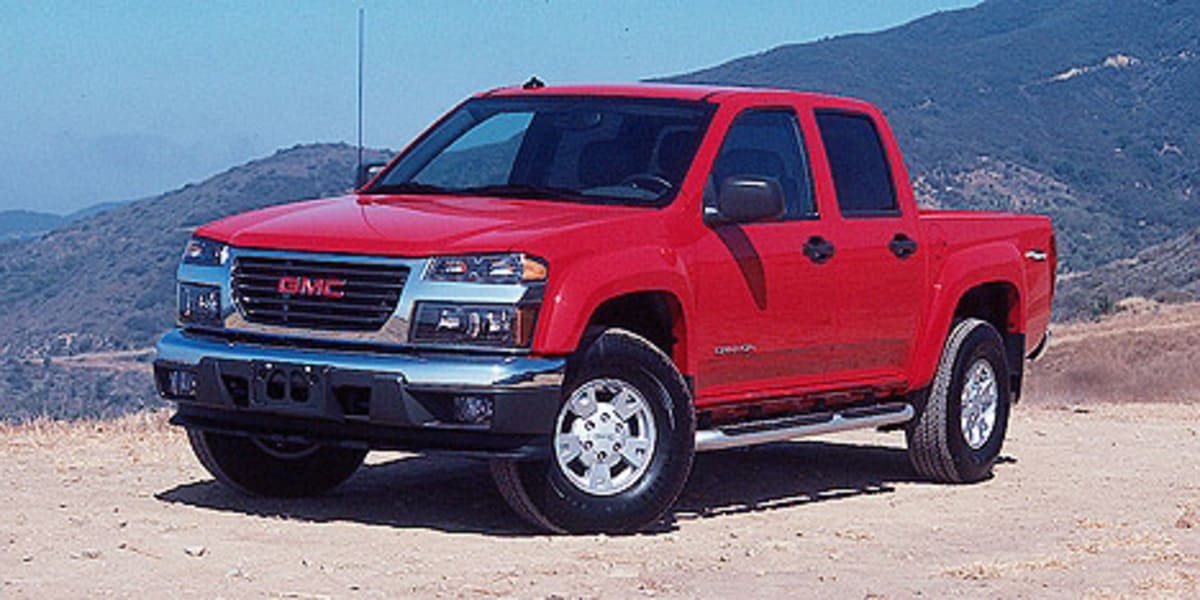
© All photos by Harvey Schwartz
BIGGER
IS BETTER
The all-new Canyon was designed from the ground up to give consumers more in a
mid-size pickup - more power, more interior space, a bigger cargo box, and more
functionality. The Canyon's exterior design is both more
aerodynamic and contemporary. It now looks like it's big brother GMC
Sierra. The Canyon now shares the same front fascia with big quad
headlamps, turn signals, GMC signature grille, and big chrome bumper. The
4x4 model gets dual tow hooks. Rectangular fog lamps are optional, but
standard on the loaded SLE model that I tested. The Canyon is available in three
body styles to suit almost any customer's needs, including crew cab, extended
cab and regular cab models. You can order the Canyon in the popular
two-wheel rear drive, or four-wheel drive.
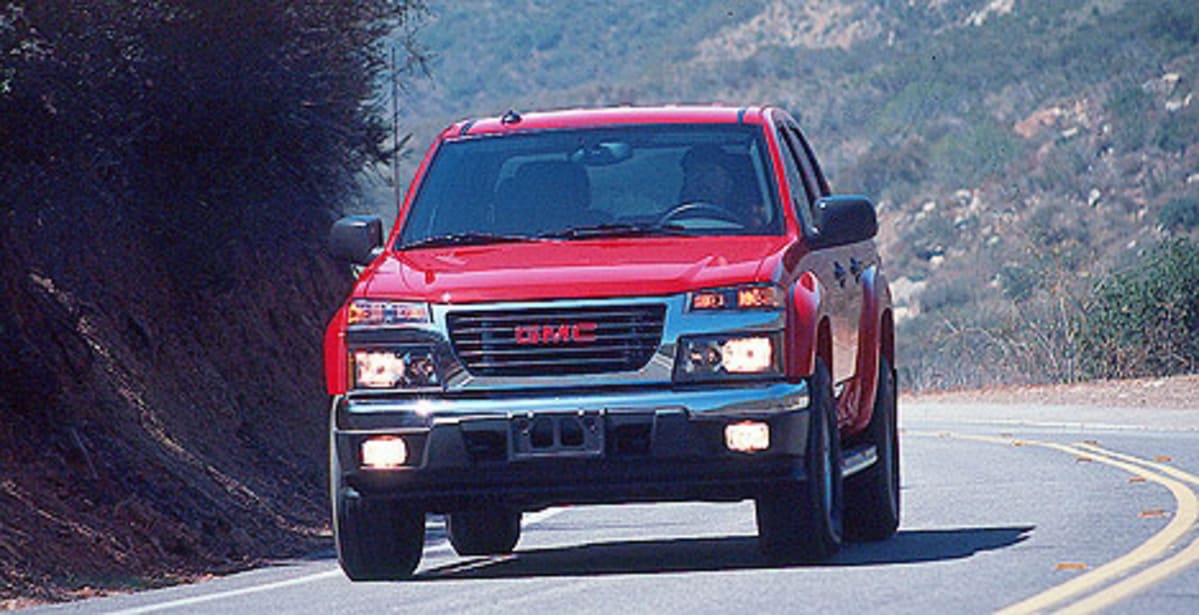
Under the hood, Canyon delivers plenty of horsepower and torque with two new
inline engines - the Vortec 2800 in-line four-cylinder and the optional Vortec 3500
in-line five-cylinder. Both are based on the award-winning Vortec 4200 in-line six-cylinder engine introduced in the 2002 GMC Envoy SUV. The
standard Vortec 2800 2.8-liter I-4 delivers 175 hp at 5,600 rpm and 185 lb.ft. of torque
at 2,800 rpm. The optional Vortec 3500 3.5-liter DOHC, aluminum alloy, I-5
(the first application of a five-cylinder powerplant in a consumer pickup) puts
out 220 hp at 5,600 rpm and 225 lb.ft. of torque at 2,800 rpm. Both engines
feature electronic throttle control, variable valve timing and coil-on-plug
ignition. These two engines are hooked up to an all-new five-speed manual
transmission, a new electronic, shift-on-the-fly transfer case for
four-wheel-drive models, and the proven, ultra-smooth four-speed Hydra-Matic
4L60-E automatic transmission, which is optional. Both engines are
powerful and both transmissions put the power down when needed.
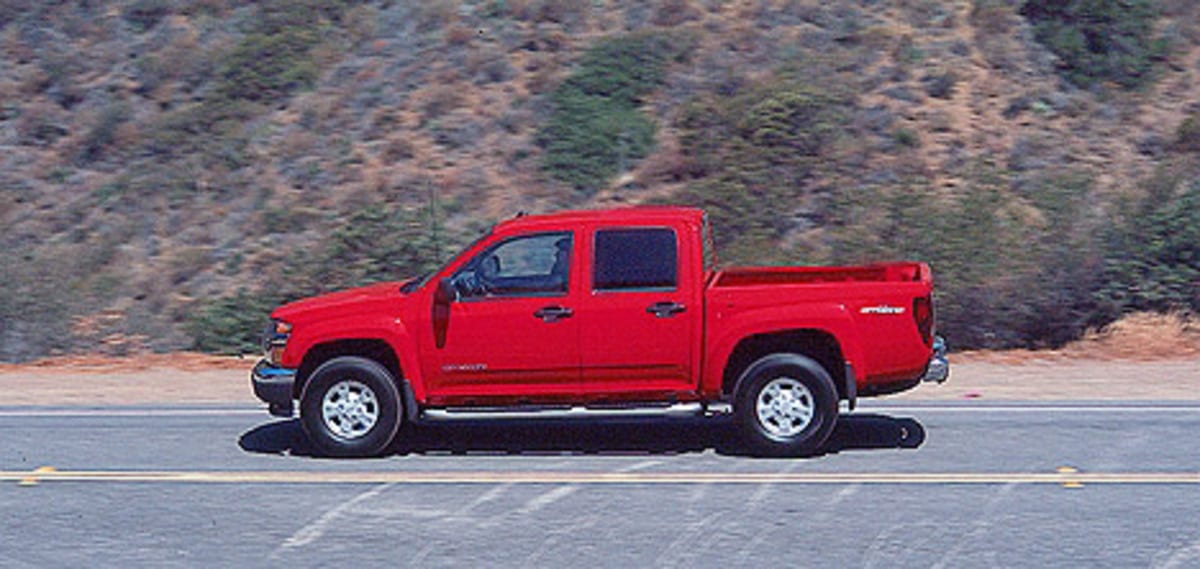
Canyon's larger size provides outstanding room, passenger comfort and
cargo-carrying capability. The regular cab model features 60/40 bench
seats in standard cloth, with optional reclining bucket seats. The
four-door extended-cab model comes with two forward -facing rear seats with
under-seat storage and a flat-load floor. Crew cab models feature front
bucket seats, available in cloth or leather, and a 60/40-split flat-loading rear
bench seat capable of carrying three persons.
The instrument cluster is
new and features 'machined' styled bezels around the big 110 mph speedometer
and big 8,000 rpm tachometer. In between the big gauges are two gauges for
fuel and engine coolant temperature. Bright LED readouts warn of system or
safety failure. Just below is a Driver Information Center with even more
system readouts to warn you in case of failure. The center stack is
trimmed in contrasting silver and contains easy to use controls for the AM-FM
stereo radio/CD player and the big rotary dials for the climate system. If
you option for the 4x4 system, the shift-on-the-fly control buttons are found on
the top left side of the center stack for easy use. The four-spoke, tilting,
leather wrapped steering wheel feels good in your hands, and there is now an
optional electrochromic inside rearview mirror with compass and outside
temperature readout. The front power bucket seats are offered with heated
seat bottoms and seat backs. Other options inside include XM Satellite
Radio and the OnStar safety and security system.
Canyon provides flexible hauling capabilities with a six-foot cargo box (five-foot
cargo box on crew cab), along with two-tier loading and a locking tailgate.
Maximum towing capacity for the I-4 with automatic transmission is 3,000 lbs. and
4,000 lbs. with the I-5 engine with the automatic transmission.
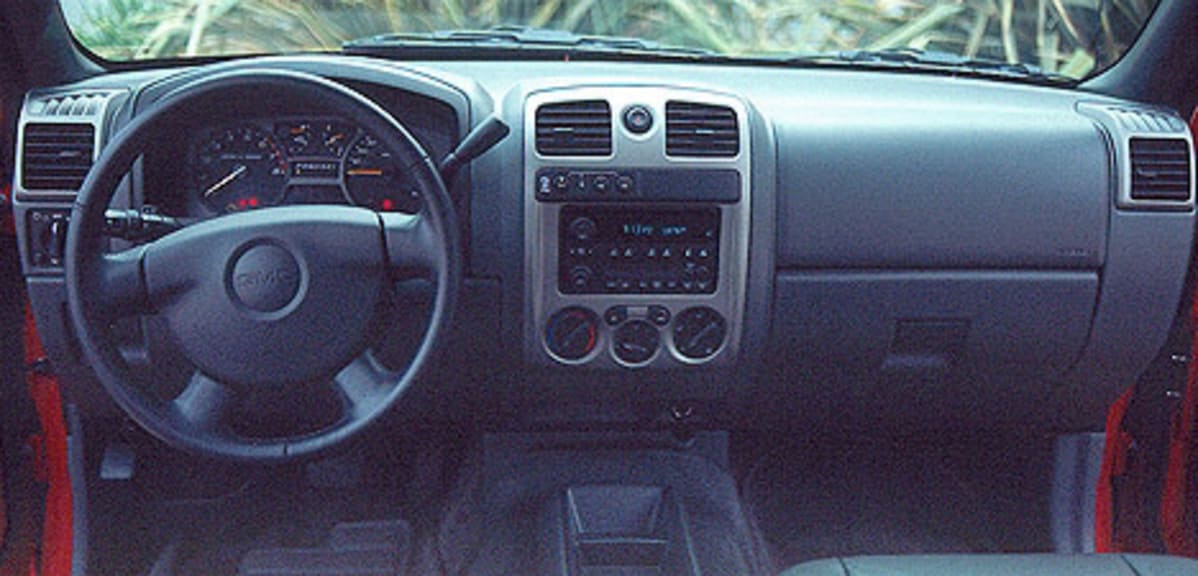
Canyon's all-new chassis was designed to deliver exceptional ride and handling
characteristics. A proven ladder-type frame underpins Canyon's rugged,
rigid chassis. Rear-drive models have a standard independent front
suspension with coil springs, gas-charged shocks and a 28 mm stabilizer bar.
The rear suspension features a live semi-floating axle leaf springs and
gas-charged shock absorbers. The four-wheel drive models feature
independent torsion bars up front. The ride is much smoother than last
year's Sonoma because of the longer wheelbase and wider track.
All Canyon models feature standard rack & pinion steering that delivers more
precise steering response and control. Canyon's standard four-wheel ABS
brake system was designed for heavy-duty service with tandem power brake
boosters, dual-piston disc front brakes and big 295 mm diameter rear drums.
I would like to see all the brakes steel discs for extra braking power and
fade-resistant capability when driving in the rain or through puddles of water.
Fifteen-inch wheels and tires are standard.
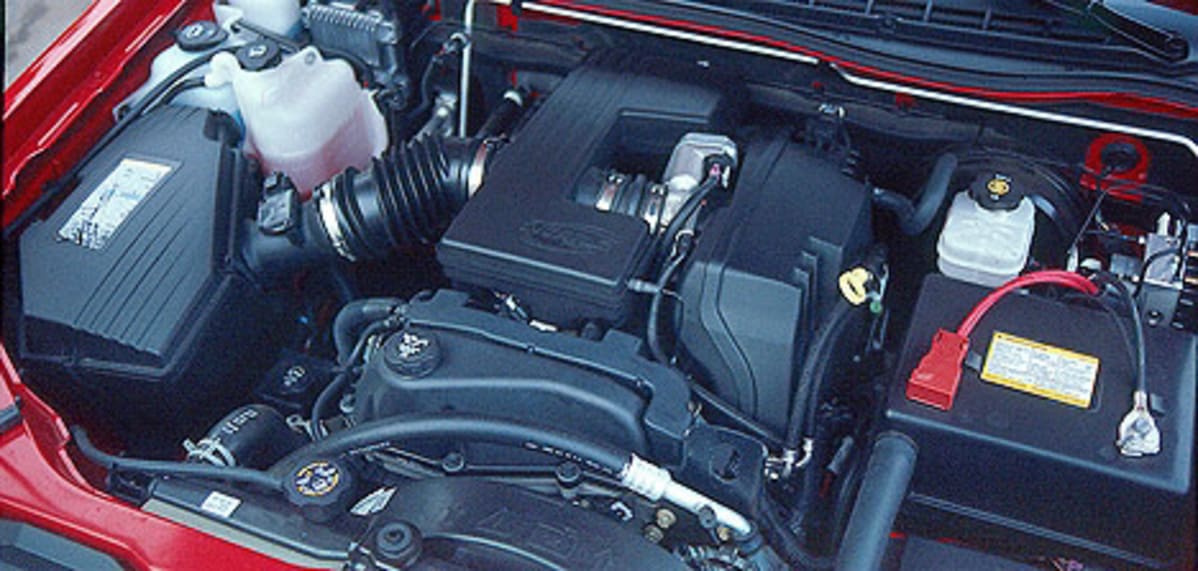
Canyon offers an impressive list of occupant protection safety features. Standard front airbags, and three-point safety belts are standard. Head-curtain side airbags are available for added side-impact protection. Canyon is constructed with a reinforced safety cage and side guard door beams to enhance the safety of the driver and passengers. Canyon also features high-intensity composite headlamps and available halogen fog lamps for improved visibility. Other safety features include a highly deformable all-steel body, Daytime Running Lamps, and the LATCH (lower anchors and tethers for children) system. The all-new GMC Canyon mid-size pickup truck is a definite improvement over last year's smaller Sonoma model but I was disappointed that there was not much attention given to brightening up the interior, it seems a bit dull, and that all four wheels don't have disc brakes to increase stopping power. Other than these two items, the GMC Canyon is bigger, stronger and safer than the Sonoma model that it replaces. The competition is fierce in the mid-size pickup truck segment and maybe next year's model will have the improvements that I have mentioned. © All text and photos by Harvey Schwartz
For more information on GMC products, go to www.gmc.com.
More photos from Harvey Schwartz can be found at www.autofotos.com
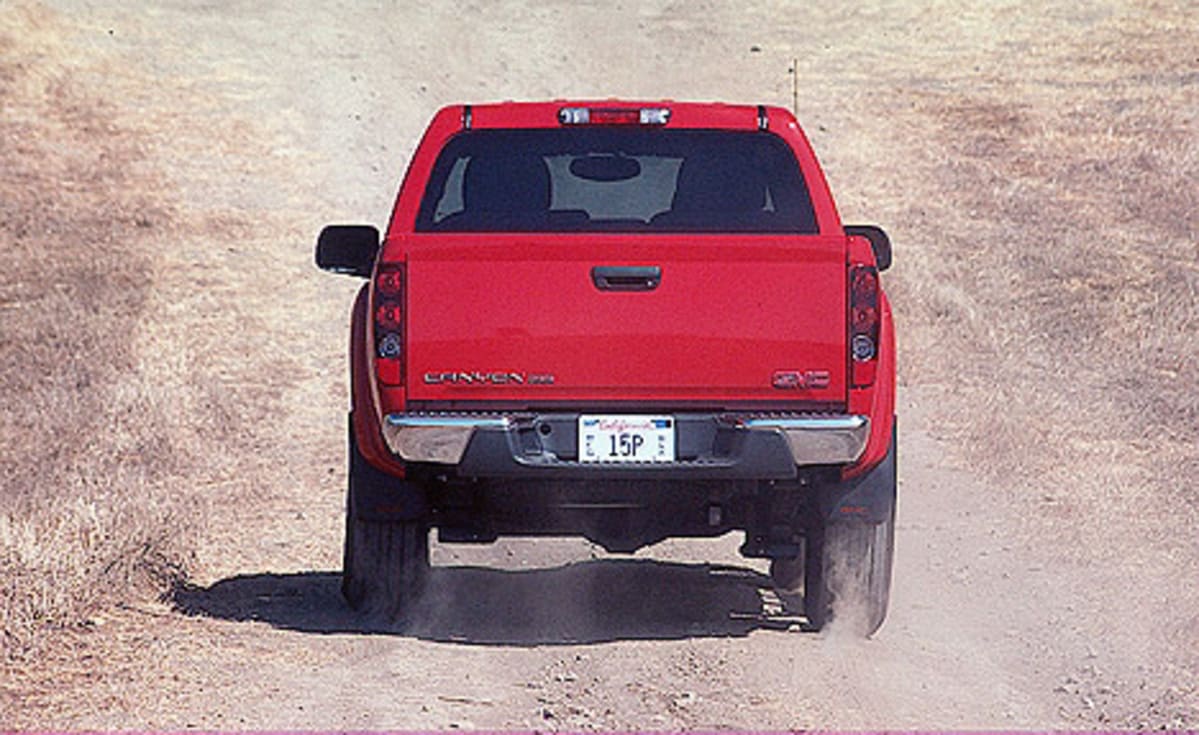
SPECIFICATIONS Name of vehicle: GMC Canyon 3.5-liter 4x4x4 Crew Cab SLE Price of vehicle: $30,735.00 Engine type: Vortec 3500 3.5-liter I-5 DOHC cast aluminum block/heads with continuously variable exhaust cam timing and variable exhaust cam phasing Horsepower: 220 at 5,600 rpm Torque: 225 lb.ft. at 2,800 rpm Drive configuration: Front engine/rear-wheel drive or four-wheel drive Transmission type: 5-speed manual transmission or 4-speed automatic Front suspension: Independent with coil-springs for rear-wheel drive, independent with torsion bars, for 4WD, gas-charged shock absorbers, 28 mm stabilizer bar Rear suspension: Live axle, steel leaf springs, gas-charged shock absorbers Wheels/Tires: 15 x 6 steel wheels standard, optional 15 x 6.5 aluminum wheels, 15 x 7 aluminum wheels with Z71 Off Road Suspension; P205/75R15 all-season steel-belted radials, P235/75R15 all-season steel-belted radial tires standard on 4WD; P265/75R15 on/off-road steel-belted radials, full-size spare standard on all models Brakes: Front: 11.2-in. vented disc with a dual piston caliper Rear: 11.6x2.5-in. drums ABS at all four brakes Overall length: 207-in. Overall width: 67.6-in. Overall height: 64.8-in. Curb weight: 4,150 lbs. EPA mileage: 17 mpg/city 22mpg/highway
